Spending 1 day in Kyoto can still offer a deep dive into Kyoto’s history, culture, and sights.
This guide is all about squeezing the best of Kyoto into 24 hours. From the iconic Fushimi Inari Shrine with its endless torii gates to the historic streets of Gion, where the culture of geishas is still alive.
I’ll take you to one of Kyoto’s most revered temples, show you the highlights of Higashiyama district, and even recommend authentic kaiseki cuisine. You can see geishas in Gion, walk peacefully by the Kamo River, and even go to Pontocho Alley for a late-night drink.
I know you’ll fall in love with Kyoto, so if next time you need a little more time in the city, make sure to check my 2 days in Kyoto and 5 days in Kyoto itineraries.
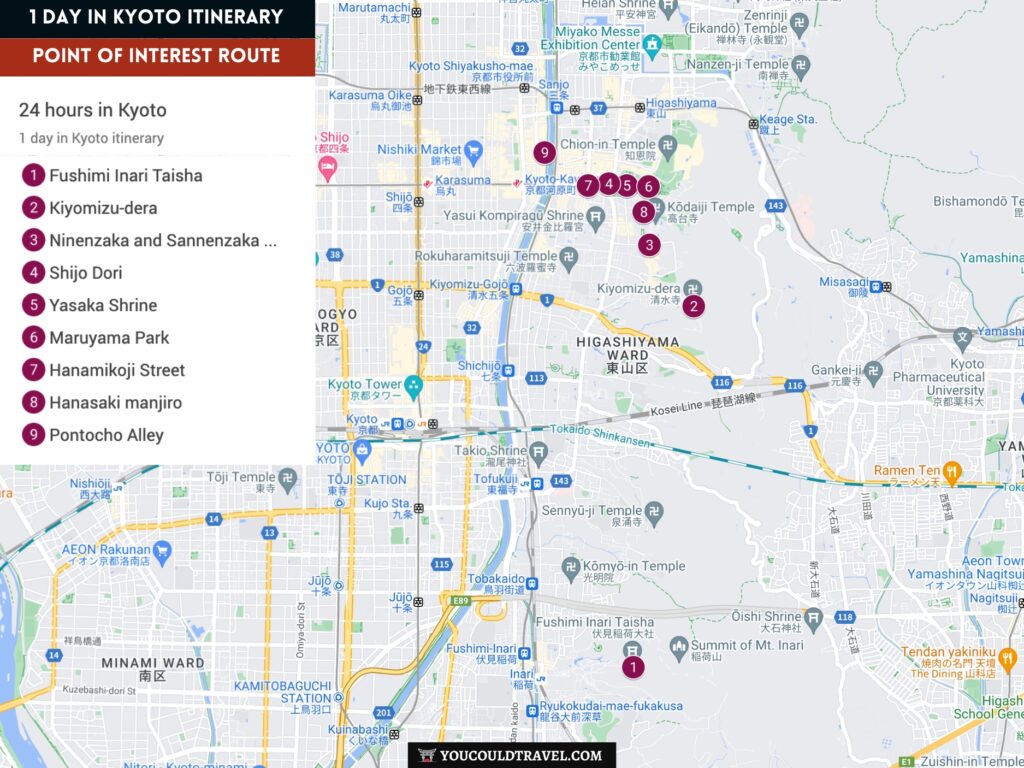
1 day in Kyoto itinerary
This guide is your shortcut to hitting the highlights of a city that’s packed with history, culture, and natural beauty.
There are a few things I want to mention to ensure you really make the most out of your day in Kyoto.
Try to get your Kyoto accommodation somewhere in Higashiyama district. This will save you a lot of time in the morning. To make the most out of your experience, stay in a traditional ryokan with Japanese breakfast included. I have a whole article explaining the best places to stay in Kyoto with tried and tested hotels.
Have an IC card loaded with Japanese yen or connected to your Apple/Google Pay. This will save you a lot of time. I explain how to do it in my planning for a Japan trip guide.
This is mainly a walking itinerary, so there is an assumption that you have comfortable shoes and are dressed for the weather.

8:00 Fushimi Inari Shrine
Start your day at Fushimi Inari Shrine, one of the most famous Shinto shrines in Japan, known for its thousands’ vermilion torii gates. It’s in the southern part of Kyoto and is dedicated to the Shinto god of rice. Early morning is less crowded, which is the perfect time to visit.
To save time, hike to the Fushimi Inari Yotsuji Intersection, take some beautiful pictures of Kyoto from above, then head back down to the base of the mountain. As a souvenir, purchase an ema, which is a Japanese wishing wooden plaque.
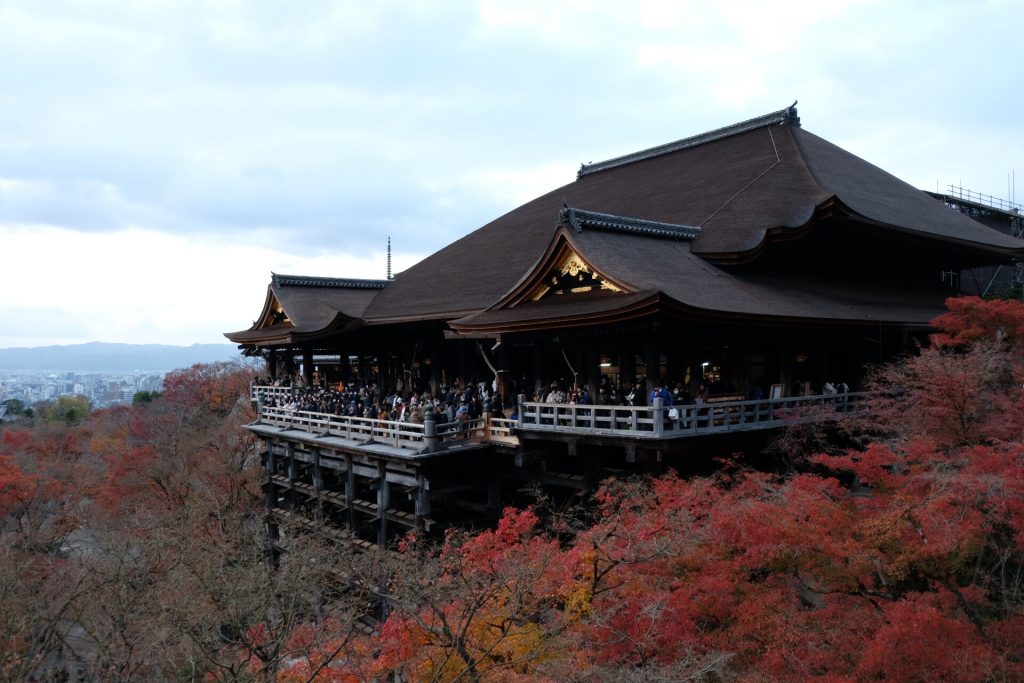
10:30 Kiyomizu-dera
Next, head to Kiyomizu-dera, is a historic temple that dates back to the year 778, although the present buildings were constructed in 1633. The building is famous for its wooden stage that rises 13 meters above the ground. It gives amazing views of cherry and maple trees below, which change color with the seasons.
This temple is part of the Historic Monuments of Ancient Kyoto UNESCO World Heritage site. There’s a waterfall below the main hall, where visitors can drink from cups attached to long poles. Each stream is thought to have different benefits, such as longevity, success at school, and a lucky love life.
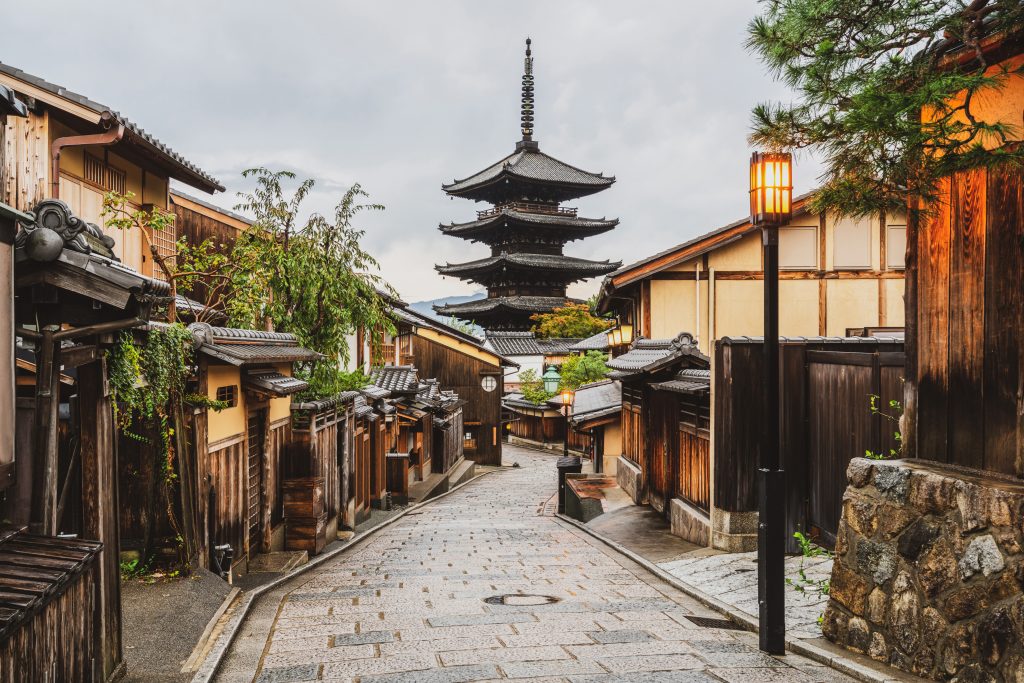
12:30 Sannenzaka & Ninenzaka
After visiting Kiyomizu-dera, you’ll walk down Kiyomizuzaka, lined with souvenir shops. Just before the road splits at the bottom, take the path on your right to Sannenzaka, a historic street paved with cobblestones and flanked by Kyoto Machiya townhouses from the Edo and Meiji periods. The street is renowned for its view of the Yasaka Pagoda, its elegant Japanese walls, and photogenic tiled roofs, embodying traditional Japanese architecture.
Continue down to Ninenzaka, located just off Yasaka-dori and recognizable by its Starbucks with tatami bamboo flooring. A local superstition warns against tripping here, as it’s said to bring misfortune.

14:30 Lunch on Shijo Dori
There are a lot of options for lunch on Shijo Dori, Kyoto’s main shopping street. You can choose a sushi meal from Izuju Sushi, which offers Kyoto style sushi with mackerel and tofu. You can also check out Hachidaime Gihey, a traditional eatery that serves up lunches with rice, pickles, veggies, fish and miso.
For a casual lunch, eat street food from the stalls located at the entrance of Yasaka Shrine. You’ll find dango, skewered salty fish, grilled squid and traditional sweets.
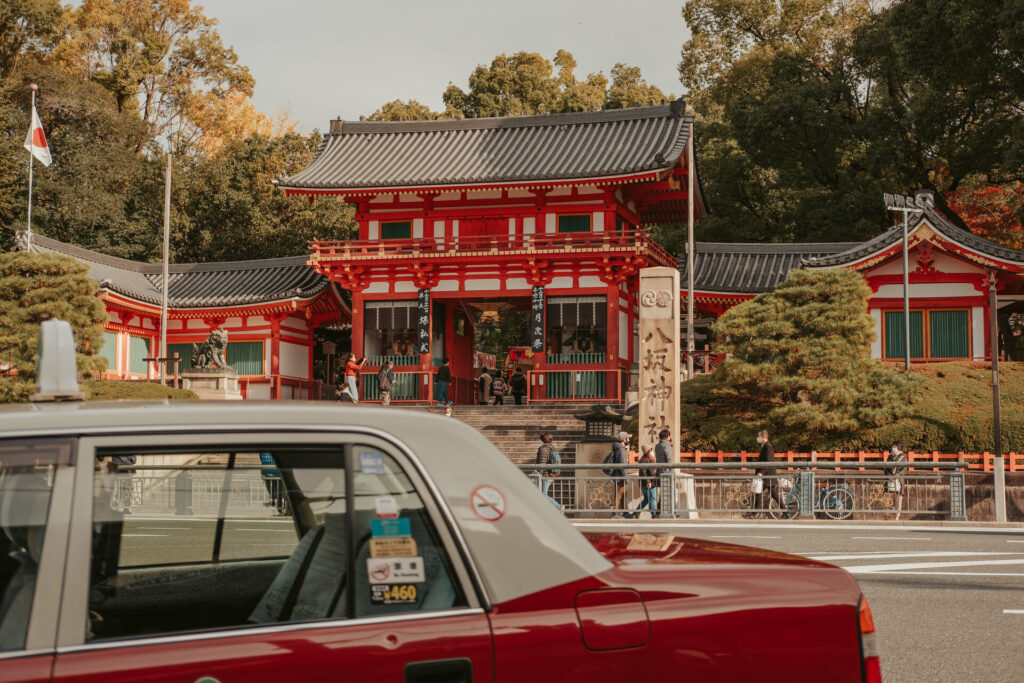
15:30 Yasaka Shrine
Yasaka Shrine is located at the eastern end of Shijo-dori and is one of Kyoto’s most famous shrines, right in the heart of Gion District.
It was founded over 1350 years ago and is particularly famous for its annual Gion Matsuri, one of Japan’s most famous festivals, which takes place in July. The shrine is dedicated to the god of prosperity and health.

16:30 Maruyama Park
Maruyama Park, adjacent to Yasaka Shrine in Kyoto, is the city’s oldest public park, renowned for its cherry trees, including a famous weeping cherry tree (shidarezakura) that becomes a spectacular focal point during the cherry blossom season in early April.
The park transforms at night during sakura season, with lanterns lighting up the trees, creating a magical atmosphere.
During the Koyo festival, Maruyama Park offers a peaceful escape with its colorful leaves, cobbled stone walking paths, and traditional tea houses.

17:30 Gion District
Gion is one of Kyoto’s most famous areas. It is known for its traditional wooden machiya houses, teahouses, and being the center of geisha culture.
Gion has a history that dates back over a thousand years. Hanamikoji Dori is the most popular and visited street in Gion. It stretches from Shijo-dori in the north to Kennin-ji Temple at its southern end.
Walking through Gion, especially in the evening, offers the chance to catch a glimpse of geiko and maiko in their exquisite attire.
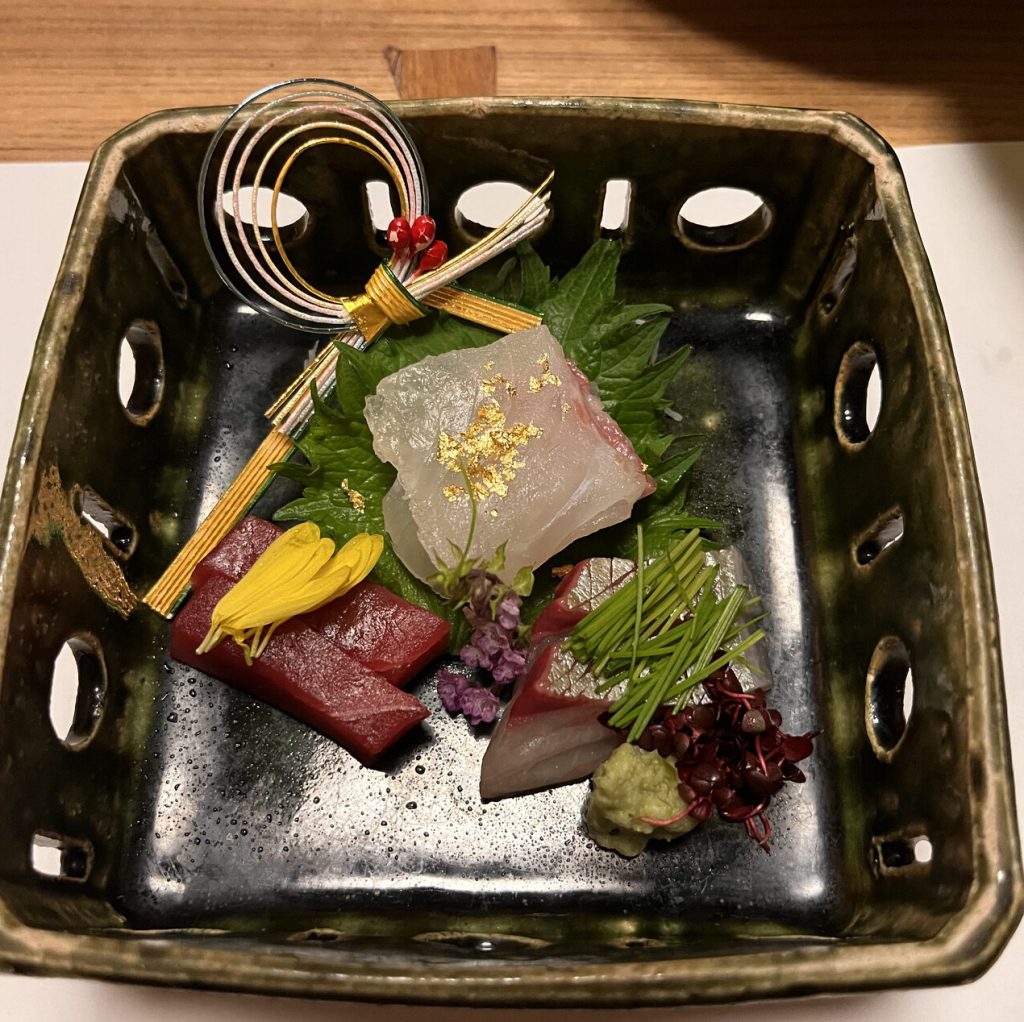
19:00 Kaiseki Dinner
No visit to Kyoto is complete without a traditional kaiseki dinner. Kaiseki is a traditional Japanese multi course meal which consists of several small dishes so you can try various textures and seasonal foods.
You are already in the best spot in Kyoto for Kaiseki, so here are my tried and tested recommendations for a fantastic meal. Please make sure to reserve your spot a few weeks in advance, as these are very popular (and delicious) restaurants.
Hanasaki Manjiro was undoubtedly our preferred kaiseki restaurant in Kyoto. We are continuing to recommend it to anyone who visits Kyoto. Book a table via the official Hanasaki Manjiro website.
Kiyamachi tousuiro – Multi-course tofu meals served in a traditional Japanese house with tatami floors. Book a table via the official Kiyamachi tousuiro website.
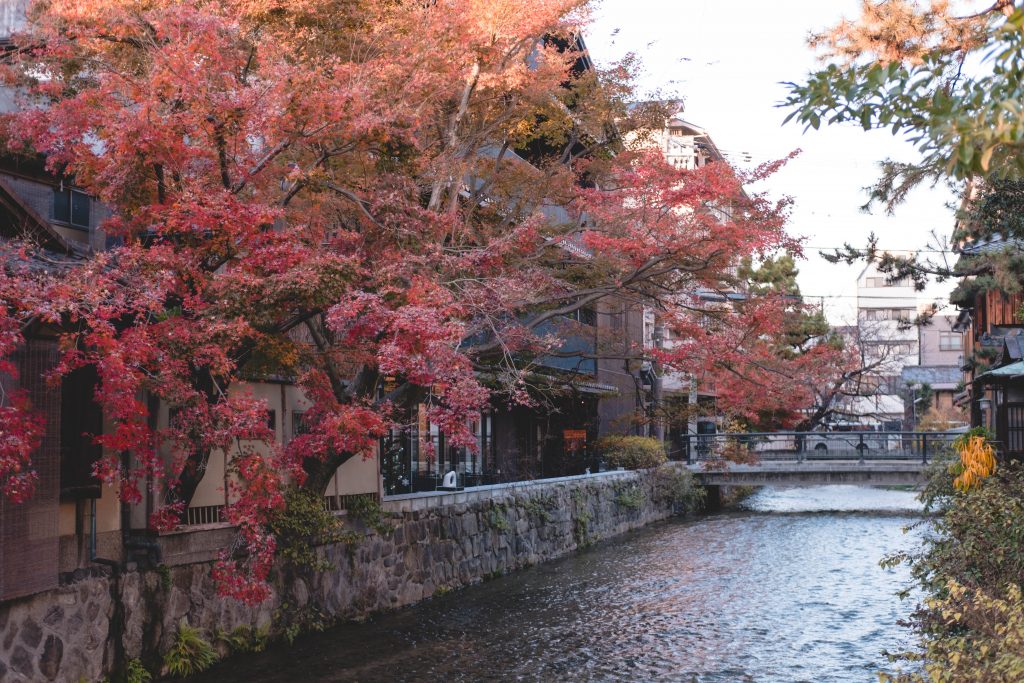
21:30 Walk on the Kamo River
After dinner, walk along the Kamo River to Pontocho Alley to experience Kyoto’s nighttime charm. The Kamo River is a peaceful place to walk in the evening. You’ll see locals and tourists alike enjoying the cool breeze, relaxing on the riverbanks, or taking leisurely strolls.
Once you reach Pontocho Alley, you will find yourself in one of Kyoto’s most atmospheric dining and entertainment districts. This narrow alley runs parallel to the Kamo River and is lined with traditional wooden buildings. It’s the perfect place to find an intimate bar for a late night sake, before heading back to your hotel.
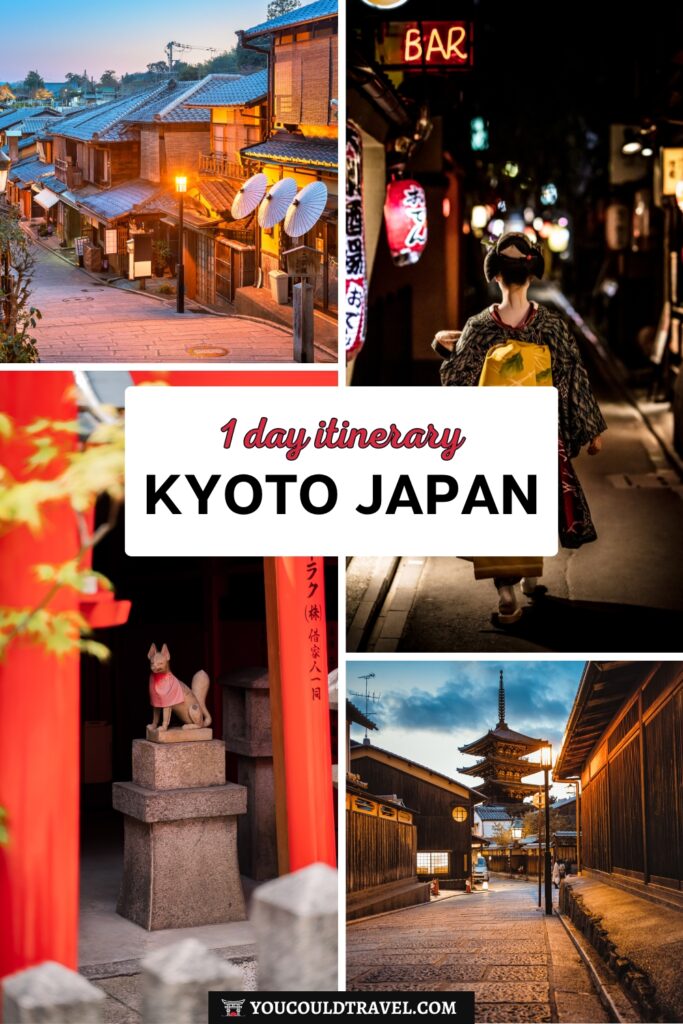
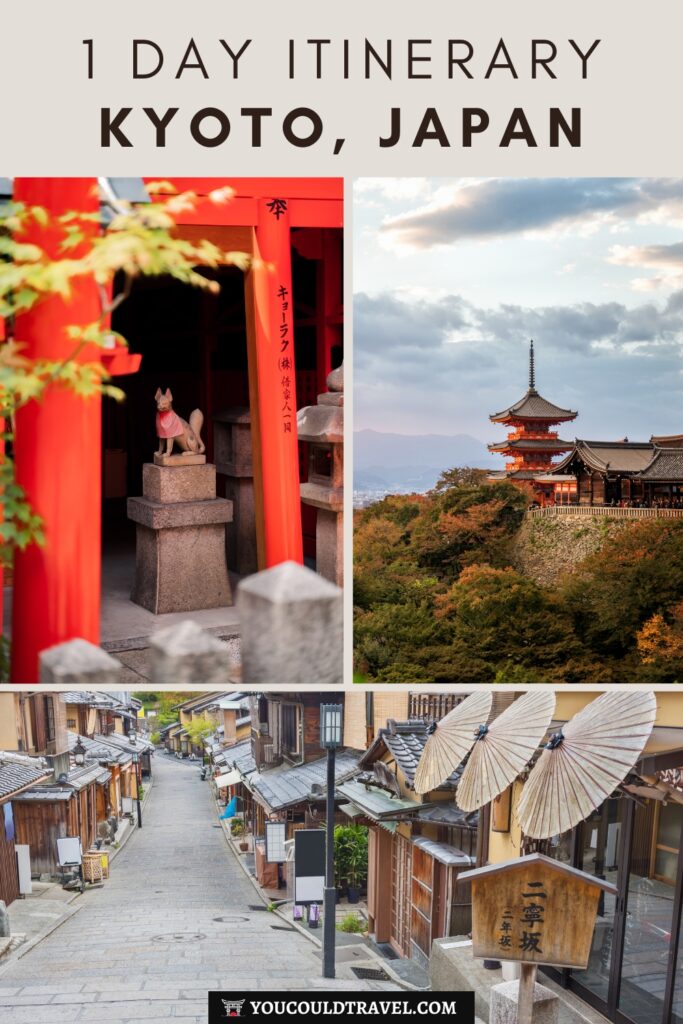
Frequently Asked Questions
Can you visit Kyoto in 1 day?
It is possible to see the most important attractions in Kyoto in just 1 day. Start nice and early to see the highlights, try some delicious local foods and get acquainted with Japanese culture.
In this 24 hours in Kyoto article, I will show you where to go, what to see and what to eat in Kyoto.
How many days in Kyoto is enough?
I normally recommend everyone to spend 3-4 days in Kyoto on their first visit. That’s enough time to see the attractions, visit sights outside of Kyoto, try the local foods, do some shopping and generally have a great time.
You can use this 5 Day Kyoto Itinerary to pick and choose the things you want to see.
Is 1 night in Kyoto enough?
It takes about 8-9 hours to see the most important attractions that you cannot miss when you are visiting Kyoto. So, while 1 night is not enough time in Kyoto, you can still see the top sights and get to know this stunning city a little.
If you arrive at midday or in the afternoon and stay one night, you might be able to squeeze in quite a few places before they close. In the evening, after dark, wonder around Kyoto to see the illuminated streets, especially Gion and the road leading up to Kiyomizu-dera. Most restaurants and bars are open until late, so you can try some of the local dishes and drinks.
Is it better to stay in Osaka or Kyoto?
Deciding whether to stay in Osaka or Kyoto largely depends on your personal preferences and travel plans. Here are some factors to consider when making your decision:
Culture and History: Kyoto is known as the cultural capital of Japan and is home to numerous temples, shrines, and historical landmarks. If you’re interested in Japanese culture and history, Kyoto may be the better choice for you.
Food: Osaka is known as the “Kitchen of Japan” and is well-known for its street food, including takoyaki (octopus balls), okonomiyaki (savoury pancakes), and kushikatsu (deep-fried skewers). If you’re a foodie, you may want to stay in Osaka.
Nightlife: Osaka has a more vibrant nightlife scene than Kyoto, with numerous bars, clubs, and entertainment venues. If you enjoy nightlife, Osaka may be the better choice.
Accommodation: Kyoto is the more popular destination, and it’s smaller than Osaka, so hotel prices are generally higher. You will find more budget friendly places in Osaka. On the other hand, Kyoto has a lot more traditional Japanese ryokans to pick from.
Convenience: Osaka is a larger city with better transportation infrastructure, making it easier to travel around the city and to nearby attractions such as Universal Studios Japan. If you value convenience, Osaka may be the better choice.
The vibe: Kyoto is the old capital of Japan and has preserved its historic streets and buildings, as well as stunning temples and shrines. Meanwhile, Osaka was historically a port and industrial city, but has reinvented itself in the past decades through food and nightlife. If you are after traditional Japan, Kyoto is the better place to stay.
Both Osaka and Kyoto are great destinations to visit in Japan, and you can easily visit one city from the other using the train or bus. The trains go between Osaka and Kyoto every 15 mins and the ride takes about 30 mins. If you have limited time, you may want to consider staying in one city and taking day trips to the other.


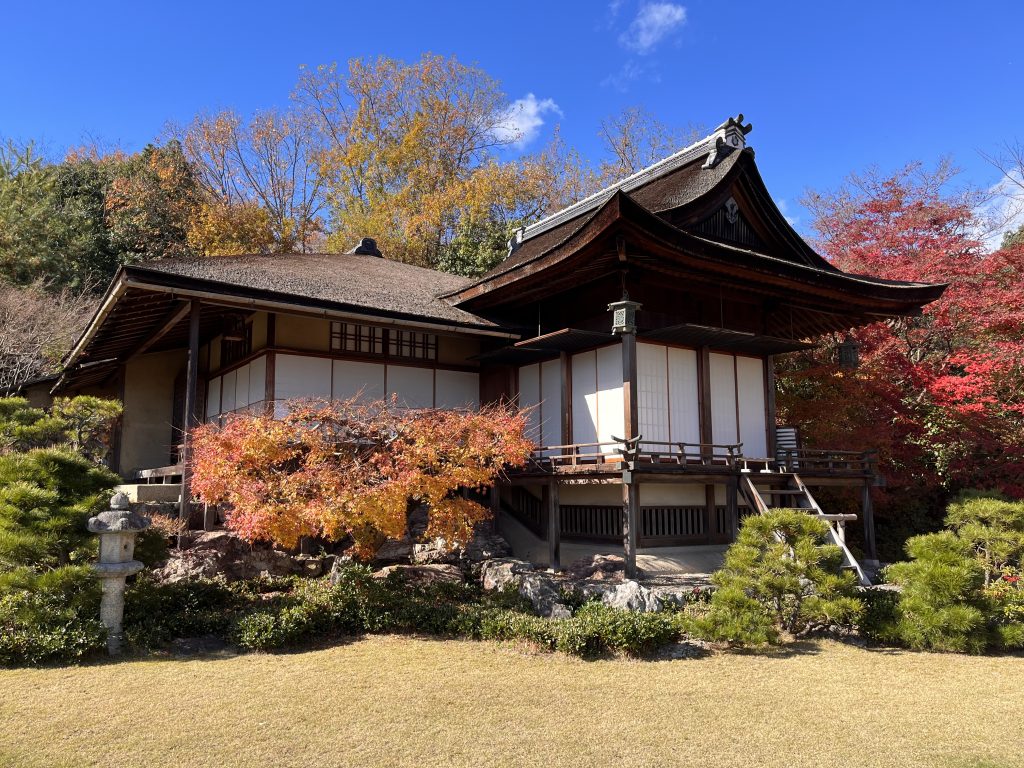

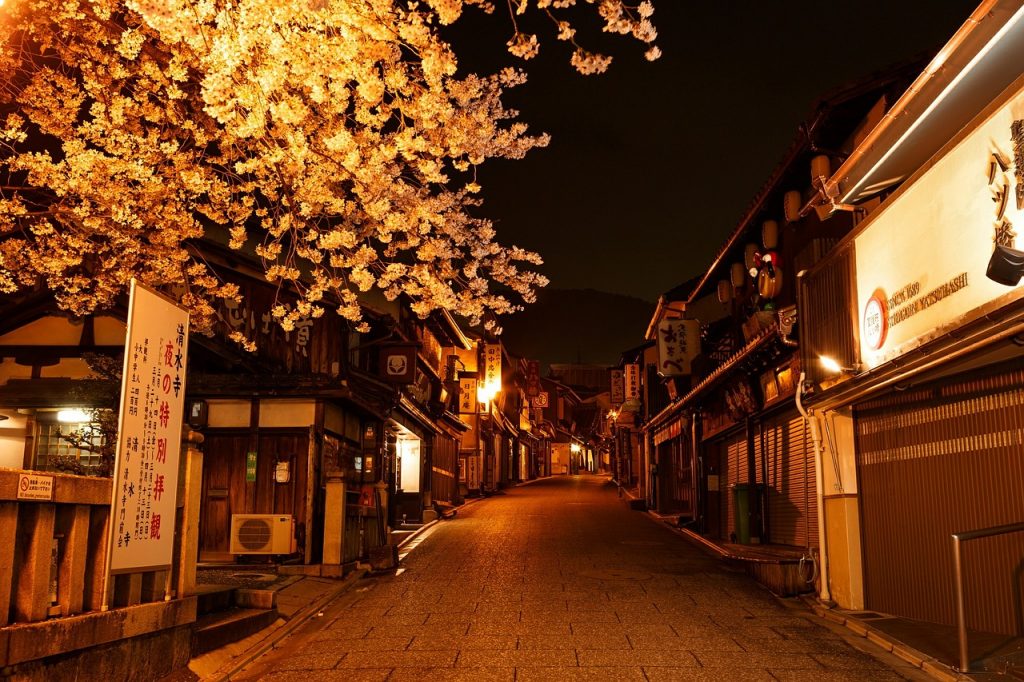
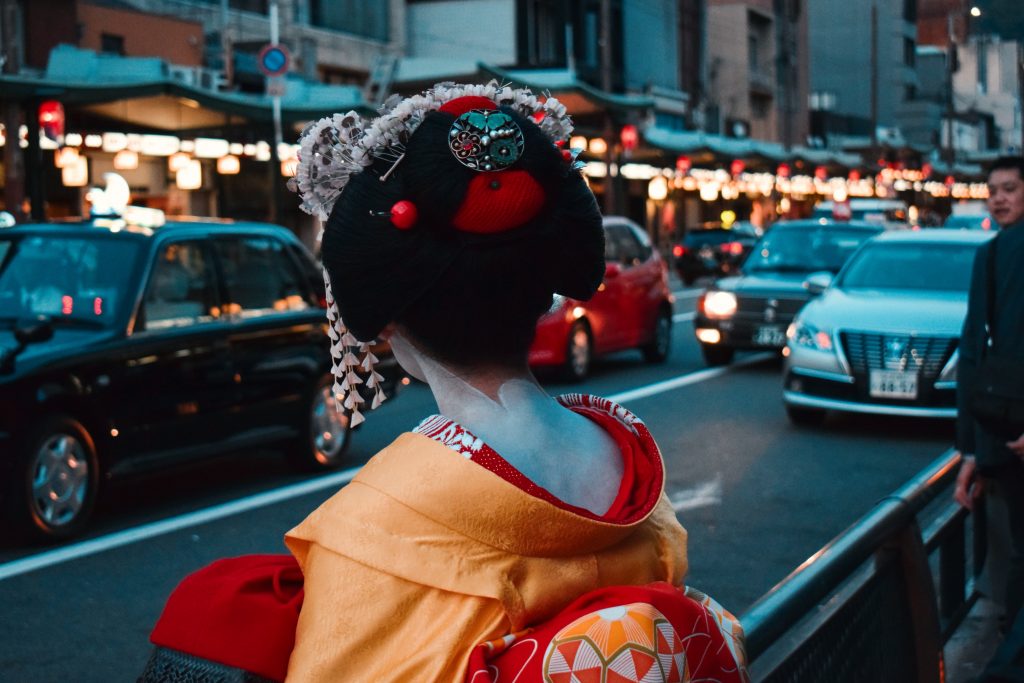



Leave a Reply